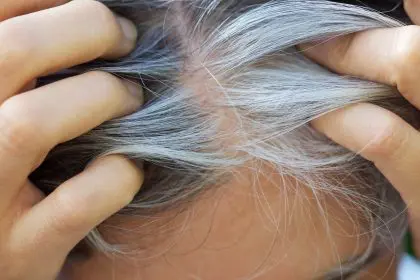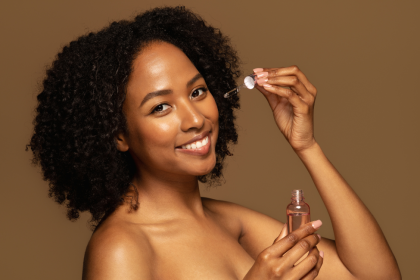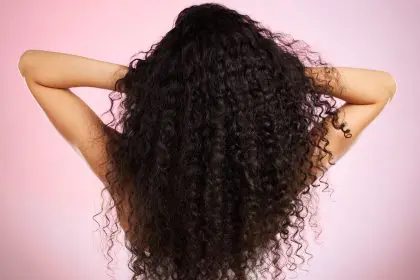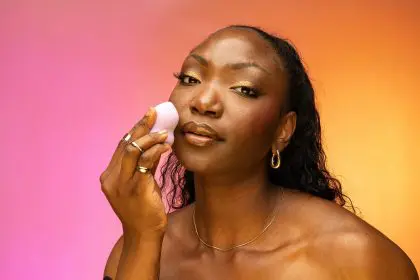Ever slathered your hair in expensive oil only to end up with a greasy mess that somehow still feels dry? You’re not alone. The culprit might not be the product itself but a mismatch with your hair’s natural structure. Welcome to the confusing world of hair porosity – the hidden factor that determines whether those fancy oils are nurturing your locks or just sliding right off them.
Think of hair porosity like your relationship status with moisture: it’s complicated. Your strands might be thirsty but picky about what they’ll drink up, or they might absorb everything but can’t seem to hold onto it. Understanding this relationship could be the difference between wasting money on products that don’t work and finally achieving that effortless, healthy shine you’ve been chasing.
What exactly is hair porosity anyway?
Hair porosity isn’t some marketing buzzword invented to sell more products – it’s actually serious hair science. At its core, porosity refers to your hair’s ability to absorb and retain moisture. This characteristic is determined by the arrangement of your hair’s cuticle layer – those tiny overlapping scales that make up the outermost part of each strand.
When your cuticles lie flat and tight against the hair shaft, moisture has a harder time penetrating the hair strand. When they’re more lifted or damaged, moisture moves in and out more freely. It’s basically how “open” or “closed” your hair is to receiving and holding onto moisture.
There are three main porosity types: low, medium (or normal), and high. Low porosity hair has tightly packed cuticles that resist moisture absorption. High porosity hair has widely spaced or damaged cuticles that let moisture in easily but struggle to retain it. Medium porosity strikes that enviable balance between absorption and retention.
Unlike hair texture or curl pattern, which you can easily see, porosity requires a bit more detective work to identify. And unlike those characteristics, porosity can change over time due to damage from heat styling, chemical processing, or environmental factors. That expensive oil that worked wonders last year might suddenly seem ineffective if your porosity has changed.
The simple tests to determine your porosity
Before diving into which oils work best for your hair type, you need to figure out where you fall on the porosity spectrum. Luckily, you don’t need fancy equipment or a trip to a specialist – just a glass of water and a few minutes.
The float test is the most common DIY method. Take a clean strand of hair (one that has naturally fallen out, not one you’ve yanked from your scalp), drop it into a glass of water, and observe. If it floats on top for a long time, you likely have low porosity hair. If it sinks immediately, you’re dealing with high porosity. Hovering somewhere in the middle suggests medium porosity.
Another telltale sign is how your hair behaves when wet. Low porosity hair often takes forever to get fully saturated – water might bead up on it initially rather than absorbing. High porosity hair, on the other hand, soaks up water like a sponge but dries surprisingly quickly. Medium porosity hair typically wets easily and takes a reasonable amount of time to dry.
Pay attention to product buildup too. If products tend to sit on your hair rather than absorbing, creating a gunky layer that needs frequent clarifying, you’re probably in the low porosity camp. High porosity hair rarely experiences buildup because it absorbs everything so readily, but might feel dry or brittle even after conditioning.
Your hair’s reaction to humidity can also provide clues. Low porosity hair tends to resist humidity changes, while high porosity hair often goes haywire at the first sign of moisture in the air, expanding and frizzing dramatically.
Why oils behave differently on various porosity types
Not all oils are created equal, and your hair’s porosity plays a massive role in determining which ones will work magic and which will leave you disappointed. The key difference lies in the molecular structure of the oils themselves.
Oils have different molecular weights and sizes. Lighter oils with smaller molecules can penetrate certain hair types more effectively, while heavier oils with larger molecules might work better as sealants for others. Think of it like trying to fit differently sized puzzle pieces through variously sized openings.
Low porosity hair, with its tightly closed cuticles, typically rejects heavy oils which just sit on the surface creating buildup and weighing hair down. It’s like trying to force a truck through a car wash designed for compact vehicles – it’s not getting through those tight spaces.
High porosity hair, with its wide-open cuticles, tends to drink up oils rapidly, but might need heavier options that can actually stick around long enough to provide lasting benefits. Otherwise, it’s like pouring water into a leaky bucket – absorption happens quickly, but retention is the real challenge.
Your hair’s porosity also influences how frequently you should be using oils. Low porosity types often benefit from less frequent but more strategic application, while high porosity hair might need more regular treatments to maintain moisture balance.
The perfect oils for low porosity hair
If you’ve got low porosity hair, you’ve probably experienced the frustration of products just sitting on top of your strands, making them feel greasy without actually improving their condition. The solution? Lightweight oils with small molecules that can actually penetrate those tightly bound cuticles.
Grapeseed oil is a superstar for low porosity hair. With a featherlight consistency and tiny molecular structure, it can slip through those resistant cuticles without causing buildup. Its slightly astringent properties also help keep the scalp balanced, which is a bonus if your low porosity hair tends toward oiliness at the roots while remaining dry on the lengths.
Sweet almond oil offers similar benefits with a bit more conditioning power. It’s still light enough to penetrate but provides a touch more nourishment for those who need it. The vitamin E content makes it particularly good for addressing dry ends without overwhelming the rest of your strand.
Argan oil, despite its trendy status in hair care, is actually a solid middle-weight option that some low porosity types can tolerate in small amounts. The key is using it sparingly – think a few drops smoothed onto damp hair rather than a hefty application. It’s worth experimenting with application methods too – low porosity hair often responds better to oils applied to damp rather than dry hair.
What you absolutely want to avoid with low porosity hair are heavy hitters like castor oil or coconut oil when used alone. These thick oils will almost certainly create buildup on low porosity strands, leading to that perpetually greasy-yet-somehow-still-dry feeling that drives people crazy.
Application technique matters enormously for low porosity hair. Consider warming your oils slightly before application to help those cuticles open up a bit more. Some people find success with using oils as part of a “greenhouse method” where you apply a lightweight oil to damp hair, cover with a shower cap, and apply gentle heat to encourage penetration.
The ideal oils for high porosity hair
High porosity hair presents the opposite challenge – it’s not about getting moisture in, but keeping it from escaping. This hair type needs oils that can effectively seal the cuticle and prevent the rapid moisture loss that leads to frizz, dryness, and breakage.
Coconut oil, often problematic for low porosity types, can be a godsend for high porosity hair. Its larger molecular structure helps it form an effective seal on the cuticle, and its ability to actually penetrate the hair shaft means it strengthens from within as well. For many with high porosity, it’s one of the few oils that demonstrably reduces protein loss from the hair, helping maintain strength.
Castor oil, with its thick, viscous consistency, provides serious staying power for high porosity strands. It’s particularly effective as a pre-shampoo treatment or for sealing ends that tend to split and fray. Yes, it’s heavy, but that’s exactly what makes it effective for hair that struggles to hold onto moisture.
Olive oil strikes a nice balance for many high porosity types. It’s substantial enough to provide lasting moisture but doesn’t feel quite as heavy as castor oil. Its high content of oleic acid helps it penetrate the hair shaft while still forming an effective moisture seal.
For high porosity hair, layering different oils can create an effective moisture-retention system. Consider using a medium-weight oil like avocado oil first, allowing it to penetrate, then following with a heavier sealant like shea butter or castor oil to lock everything in place.
Unlike with low porosity hair, high porosity types often benefit from regular oil treatments, potentially even daily application to ends. The “LOC” method (Liquid, Oil, Cream) was practically made for high porosity hair, providing multiple barriers against moisture loss.
Medium porosity: the Goldilocks zone
If you’ve determined you have medium porosity hair, congratulations – you’ve hit the hair care jackpot. Medium porosity hair typically accepts moisture readily but doesn’t lose it too quickly, making it the most versatile when it comes to product compatibility.
Jojoba oil is often perfect for medium porosity hair because its structure closely resembles the sebum your scalp naturally produces. It absorbs well without being too heavy or too light. This natural compatibility makes it less likely to disrupt your hair’s existing moisture balance.
Argan oil, the much-hyped “liquid gold,” actually lives up to its reputation for medium porosity types. It offers an ideal balance of penetration and sealing properties, improving hair’s condition from within while providing a light protective layer on the outside.
Avocado oil, rich in vitamins and fatty acids, delivers substantial nutrition without overwhelming medium porosity strands. Its moderate weight makes it versatile enough for regular use, either as a pre-wash treatment or a light styling aid.
The beauty of medium porosity hair is its forgiveness – it can usually tolerate a wider range of products without adverse effects. This doesn’t mean you should go product-crazy, but you generally have more flexibility to experiment without risking major setbacks.
To maintain this ideal porosity balance, be mindful of potential damage from heat styling, chemical processing, or environmental exposure. Medium porosity can shift toward high porosity when damaged, so protective practices are still important for long-term hair health.
How to apply oils based on your porosity
Understanding which oils work best for your porosity type is only half the equation – how and when you apply them matters just as much for maximum effectiveness.
For low porosity hair, timing is crucial. Apply oils to damp, not soaking wet hair, ideally after using a water-based leave-in conditioner. The slight moisture helps the cuticles remain slightly lifted, giving oils a better chance at penetration. Using oils as a pre-shampoo treatment rather than a leave-in can also prevent that greasy buildup feeling.
High porosity hair benefits from a different approach – applying oils to very wet hair helps trap that initial moisture inside. The “sandwich method” works particularly well here: water first, followed immediately by oil while still quite wet, and then a cream product to add another sealing layer.
Medium porosity hair offers the most flexibility – oils can be applied to wet, damp, or dry hair depending on the desired effect. For styling and shine, dry application works well. For deeper conditioning, damp application is ideal.
The amount of oil needed varies dramatically by porosity type. Low porosity hair typically needs just a few drops, applied primarily to ends and worked upward with whatever minimal amount remains on the hands. High porosity might require several times that amount, distributed more thoroughly throughout the hair.
Temperature manipulation can enhance oil effectiveness for all porosity types. Warming oils slightly (by rubbing between palms or placing the bottle in warm water) increases their fluidity and potential penetration. For low porosity especially, applying gentle heat after oiling – whether through a hooded dryer or a warm towel wrap – can significantly improve absorption.
Finally, frequency guidelines differ based on porosity. Low porosity hair might only need oils once a week or even less frequently. High porosity might benefit from daily application, particularly to ends. Medium porosity typically falls somewhere in between, often doing well with application every 2-3 days.
When porosity changes: adapting your oil routine
Hair porosity isn’t fixed forever – it can change due to damage, treatments, or even aging. The oil routine that worked perfectly last year might suddenly start failing you, leaving your hair feeling off without an obvious explanation.
Chemical processes like coloring, relaxing, or perming almost always increase porosity by lifting or damaging the cuticle. If you’ve recently changed your hair color or structure, you may need to shift toward oils recommended for higher porosity, even if you previously had low porosity hair.
Heat damage from excessive styling similarly raises porosity over time. If you’ve been hitting the flat iron hard lately, those lighter oils that once worked perfectly might now be insufficient for your needs. Transitioning to slightly heavier options or layering oils might become necessary.
Environmental damage from sun exposure, chlorine, or hard water can also alter porosity. Seasonal adjustments to your oil routine might be needed, especially during summer months when UV exposure is highest or winter months when indoor heating creates drier air.
Age-related changes affect porosity too. As we get older, hair often becomes more porous naturally. The oils that worked in your twenties might need reconsideration in your forties, even without any significant change in your hair care routine.
Pay attention to your hair’s feedback. If suddenly your trusted oil seems too heavy or too light, don’t stubbornly stick with it out of habit. Your porosity might have shifted, requiring a corresponding shift in your product choices. The simple porosity tests mentioned earlier can be repeated periodically to check for changes.
The world of hair porosity and oils doesn’t have to remain a mystery of trial and error. With the right knowledge about your hair’s structure and needs, you can make informed choices that save both money and frustration. Whether your strands are stubbornly resistant to moisture or drinking it up faster than you can apply it, there’s an oil strategy that can help you achieve that elusive balance of softness, strength, and shine.
Remember, your perfect hair routine is as unique as you are – embracing your specific porosity needs rather than following generic recommendations is the fastest route to your best hair days ever.
















